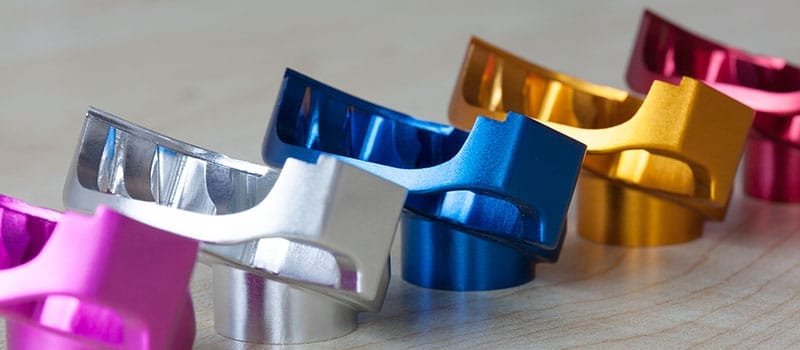
What is anodized aluminum
Anodization is an electrochemical process used to create a durable, decorative, corrosion-resistant, anodic oxide finish on many different types of metals. Aluminum is ideal for anodization because its oxide layer is very thin and does not affect the strength of the base material. The anodic oxide layer is also very hard and scratch-resistant. As with any electrochemical process, anodization involves two half cells, with the anode being the metal substrate and the cathode being the electrolyte solution. The anodic oxide forms at the interface between the substrate and the electrolyte solution, creating a strong bond between them. The thickness of the oxide layer depends on the voltage, current density, time, temperature, the composition of the electrolyte solution, and type of coating desired. Anodization is a technique used to produce a porous layer of oxide on metal surfaces. As aluminum passes through the solution, it forms a thin outer coating of aluminum oxide. The thickness of the oxide layer depends upon the voltage applied to the cell and the concentration of the electrolyte. The oxide layer increases the corrosion resistance of the substrate.
Hard anodized aluminum
Hard anodization is a process that involves applying a layer of aluminum oxide onto the surface of an aluminum alloy. Hard anodized aluminum has many advantages over stainless steel. It is less expensive than stainless steel, and it weighs less. Hard anodized products are often coated with Teflon, which provides a nonstick coating. Hard anodized surfaces are scratch resistant and will not rust. Hard anodized materials can withstand extreme temperatures and resist chemicals. Hard anodized metals are also non-conductive, making them ideal for electrical components. Hard anodic coating shares many characteristics with sulfuric anodization, but the two processes create very different results. The hard anodic coating creates a much thicker aluminum oxide surface with a stronger bond to its original aluminum layer.
Anodized aluminum applications
Satellites are very expensive pieces of equipment. They need to be protected from the elements and other hazards while they’re out in space. SpaceTec protects satellites from the harsh environment in orbit using a patented technology called Corrosion-Resistant Aluminum Alloy (CRA) panels. These panels are made from an aluminum alloy that is resistant to corrosion from moisture, salt, humidity, and temperature extremes. CRA panels also resist scratches, dents, and dings that occur during launch and landing. SpaceTec’s CRA panels are installed on spacecraft, satellite antennas, and ground stations. SpaceTec’s panels are also used extensively in large-scale industrial projects including the construction of the Willis Tower in Chicago.
The rise of anodized aluminum in Vietnam
With the desire to bring to the international market high-quality anode aluminum products from Vietnam, Vietnam Outsourcing Pte Ltd’s suppliers have focused on investing in a modern anode aluminum production line system. The most modern automatically operating system of plating tank, dyeing tank, ED, drying oven, crane… The final product satisfies global standards with various available colors, 6 – 18 micron coating thickness.. This is an effort to bring high-quality anode aluminum products to international consumers.

You also might want to know:
We Guarantee Successful Outsourcing
Best delivery performance, competitive pricing, better commercial terms, stable supplier base, control lead time
Effective and seamless workflow
With millions of parts delivered annually and serving more than 30 international customers, we are practicing the most advanced workflow to ensure the satisfaction of our customers and suppliers
-
part shipped annually7mil
-
Quality acceptance98%
Free consultation
Book an online meeting within 24 hours

